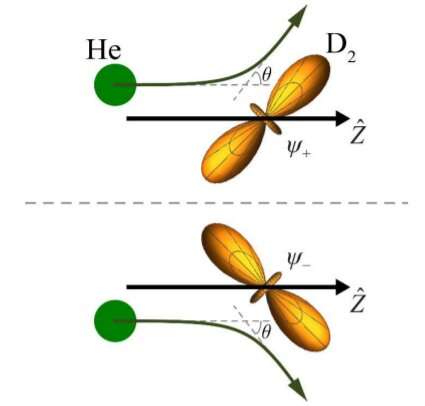November 26, 2021 report
Using molecules and atoms to conduct the double-slit experiment

A team of researchers at Stanford University has developed a way to conduct the famous double-slit experiment at the molecular level. In their paper published in the journal Science, the group describes their technique and suggest that it could be used to assist with other molecular experiments.
In 1801, Thomas Young conducted what has come to be known as the double-slit experiment. At the time, he used it as a means to prove that light behaves as a wave. Since that time, light has been found to also behave as a particle of course, and the double-slit experiment has since been conducted in various ways under various conditions. Others have shown that electrons and atoms and molecules exhibit the same type of behavior. In this new effort, the researchers have taken the experiment to a new level by using nothing but molecules, single atoms and lasers. In the original double-slit experiment, the light passed through both slits in a superposition of trajectories. In this new method, there is only one slit, but it is in a superposition of positions.
The experiment by the team involved creating a beam of deuterium and helium molecules in a chamber cooled to –272°C. They then used pairs of polarized laser bursts to push deuterium molecules into a certain vibrational and rotational state with different orientations—at right angles to one another. These served as the slits for the experiment. The team also forced other deuterium molecules into a state where they were suppositions of both of the orientations of the slits. As helium atoms scattered off the superposed molecules (along different paths that interfered with one another), the deuterium could in a sense "feel" them both at the same time. And as the helium atoms collided with the molecules, the deuterium atoms were released back to their original state at which point, they were ionized and studied by the research team.
The researchers suggest that in addition to conducting the double-slit experiment in a new way, their work also lays the groundwork for studying quantum behavior in a new way—by preparing new types of matter. They conclude by suggesting that their techniques could also be adapted for use in studying decoherence.
More information: Haowen Zhou et al, Quantum mechanical double slit for molecular scattering, Science (2021). DOI: 10.1126/science.abl4143
Journal information: Science
© 2021 Science X Network




















